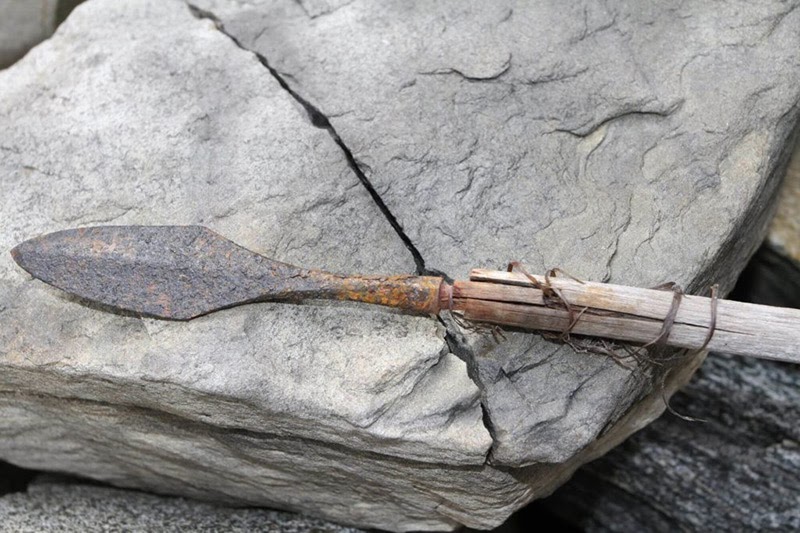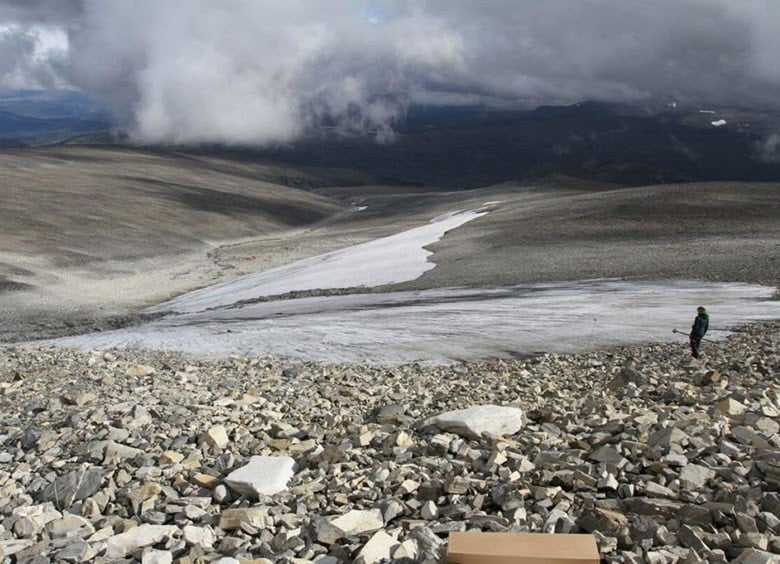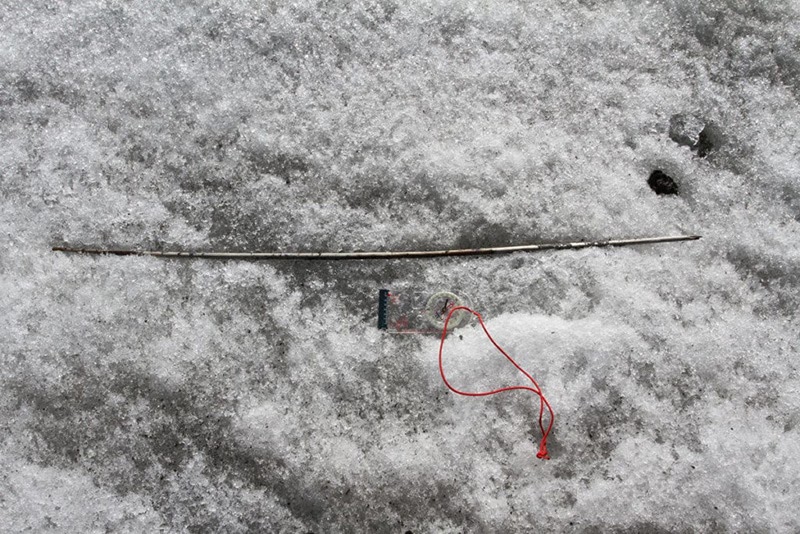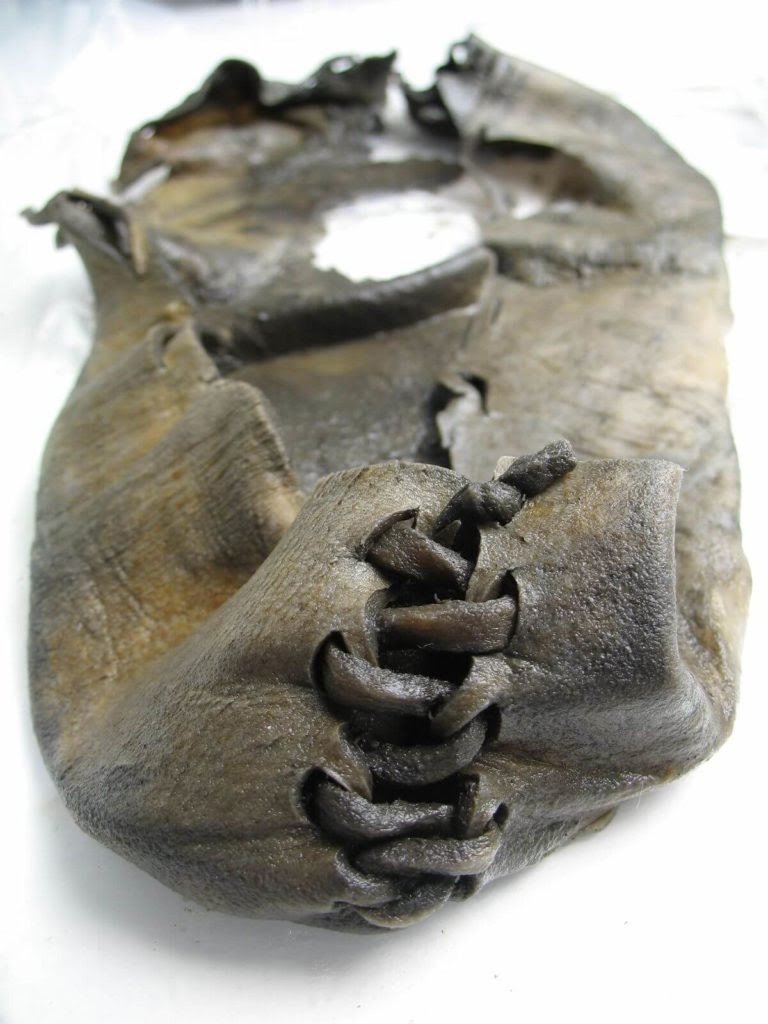
Climate change has revealed a huge haul of ancient arrows from a small ice patch in Norway’s Jotunheimen National Park.
Rising temperatures have revealed an extraordinary number of arrows from a single ice patch in Norway over the last few years.
Researchers from the Universities of Cambridge, Oslo and Bergen discovered 68 arrow shafts, some with arrow heads still attached or nearby, along with many other historic objects.
Secrets of the ice finally revealed
The reason for the study’s secrecy was that the area was so rich in artefacts. The location has only now been revealed in a major new study published in the scientific journal The Holocene, finally revealing the location after years of fieldwork.
“Doing fieldwork here and finding all the arrows was an incredible experience, an archaeologist’s dream. I remember telling the crew: ‘Enjoy the moment as much as you can. You will never experience anything like it again,’” said Lars Holger Pilø from Innlandet County Council’s Department of Cultural Heritage, who is a co-author of the paper.
Arrows date from the Stone Age to the medieval period
Almost all of the items were found on an area of mountainside no bigger than 18 hectares in Jotunheimen, a region of southern Norway. The area is already protected as one of Norway’s many national parks.

Initial radiocarbon dating has shown that the oldest arrows date from around 4100 BC while the youngest are from some time around AD 1300.
Read more: Archaeologists Discover ‘Amazing’ Iron Age Grave In Lofoten
Curiously, the dates aren’t evenly distributed, which raises questions about whether environmental conditions during some time periods were more likely to preserve fallen arrows than at other times. Variations in reindeer hunting activity could also have played a role in this odd distribution.
Some arrowheads also survived
Among the 68 arrow shafts found, a handful of arrowheads were also discovered still intact or nearby the shafts.
They are made of a variety of materials, including bone, slate, iron, quartzite and even one made of mussel shell. In some cases, even the twine and tar used to fix them to the shaft has also been preserved.

The ice storage has shifted and deformed over time, meaning that the arrows, arrow heads and other items have been moved over the years. This means it’s difficult to read too much into the specific activities they were used for.
That’s the belief of Pilø. “The ice is an artefact-preserver but it is also at the same time a destroyer of history,” he said.
Read more: Archaeologists Find Viking Sword in Central Norway
“It is important to keep in mind that ice patches are not your regular archaeological sites. They are situated in the high mountains in a cold and hostile environment. The forces of nature are on a very different scale up here than on normal archaeological sites in the lowlands,” he adds.
Proof of a key hunting ground
Nearly 300 specimens of reindeer antler and bone have also been revealed by the melting ice. This, together with the fact that reindeer still frequent the area today, means archaeologists are confident that the area has served as a key hunting ground for thousands of years.

Among the other artefacts discovered at Jotunheimen include a 3,000-year-old shoe that looks to be remarkably well-preserved considering its age and textiles that were probably used to wrap pieces of meat.
A treasure trove
William Taylor at the University of Colorado Boulder wasn’t involved in the work but called the discovery a “treasure trove,” adding how rare it is to find so many items from melting ice at a single location.
“You might expect a handful of items if you were lucky,” he told New Scientist. “It’s extremely rare and extremely important.”
The melting ice of Jotunheimen
With the warming climate, the Langfonne ice patch has retreated dramatically in recent years. It is now less than 30% of the size it was just twenty years ago.
“With the current climate prognosis, most of the ice in the high mountains of Norway will melt away during this century. The future for the Langfonne ice patch looks bleak. With more melt in the pipeline, Langfonne has surely not given up all its secrets yet. We will continue to monitor the ice here in the years ahead,” says Pilø.

